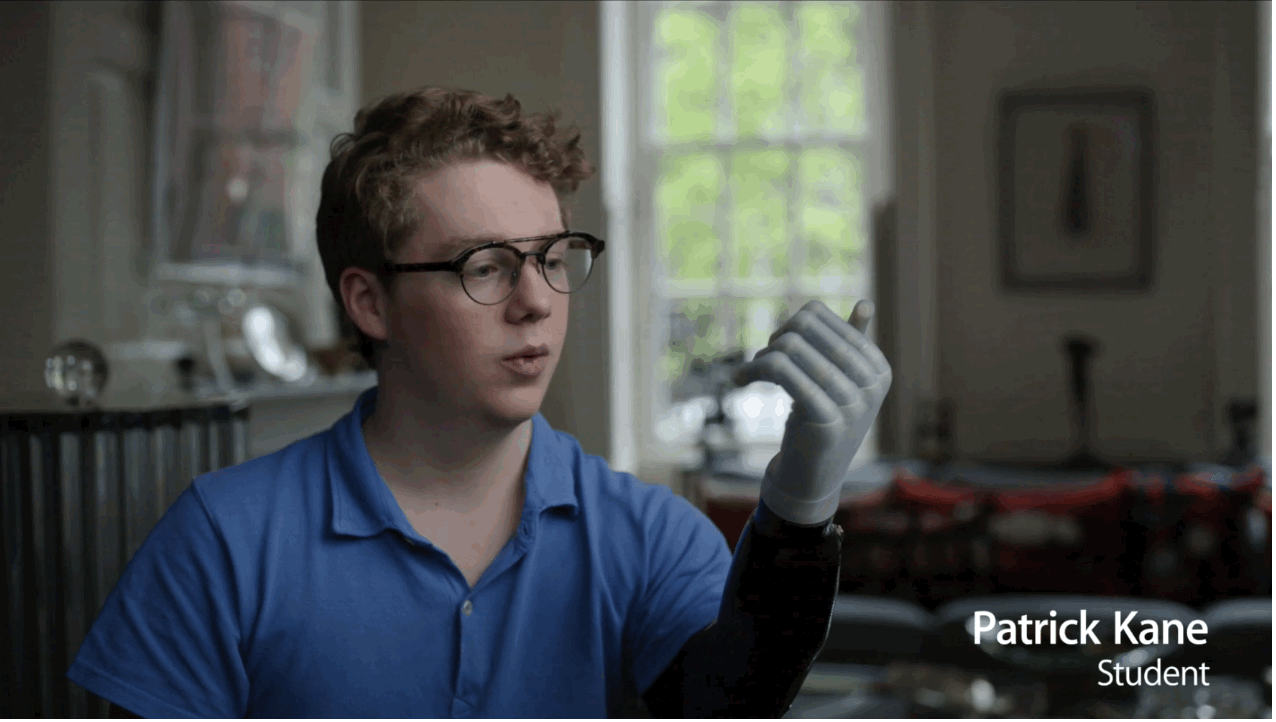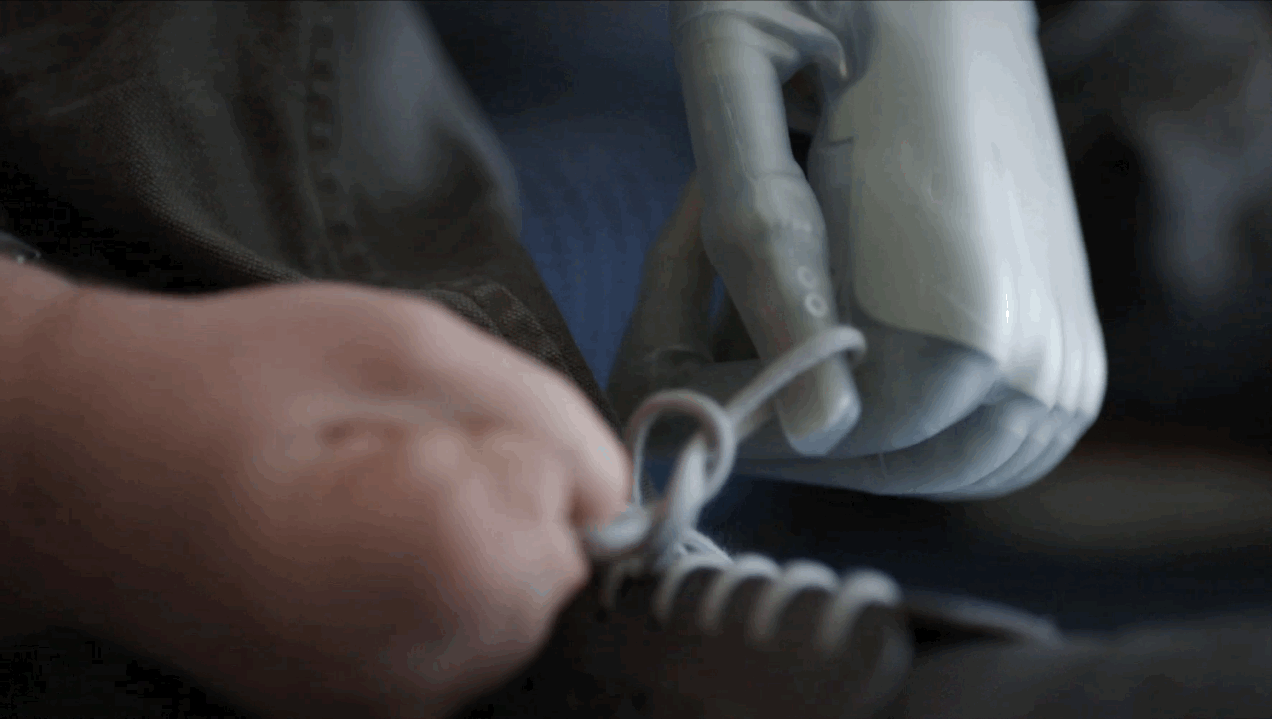Meet The Bionic Teenager From Apple's WWDC Video
If you watched Apple's WWDC 2014 intro video, you may have spotted 17-year-old Patrick Kane, the UK's first so-called "bionic teenager," who wears a robotic hand that's remotely controlled by an iOS app.

Apple.com
"Every now and then I'll sort of stare at the hand with a sense of wonder, going 'wow,'" Kane said in Apple's promotional video. "It's like magic, it really is."
Kane was born in London with all 10 phalanges, but lost all of the fingers from his left hand at just 9 months old - as well as parts of his right hand and his entire right leg below the knee - after contracting a virulent form of meningitis called meningococcal septicemia, which is an infection in the blood stream that's often fatal.
Patrick received passive prostheses over the years - one for his right leg just after his first birthday, and a device fitted for his left hand when he was 9. But as he entered his teenage years in 2010, Kane reached out to Scotland-based Touch Bionics and began the process to be fitted with the company's robotic prosthetic technology, called "i-limb."
By 2012, Patrick's prosthesis was upgraded to the company's premium robotic hand called "i-limb ultra," which allowed him more varied movements and grip strengths to carry the Olympic Flame into Trafalgar Square, after being selected as a Torchbearer for the London 2012 Olympics.
Last year, Patrick was upgraded once again with Touch Bionic's "i-limb ultra revolution," which offers a wide range of grips that are all controlled by a unique iOS app that also offers training on how to best use the device and troubleshoot it when problems arise.
Before receiving the i-limb ultra revolution, which effectively connects Patrick's prosthetic hand to Apple's mobile ecosystem, Kane would need to continually return to his computer to alter the hand's settings, which only allowed for four preset grips. But thanks to Touch Bionic's iOS app called "biosim," Patrick can type, tie his shoes, and adapt his fingers to fit around almost any shape or object.

Apple.com
"There are custom grips I can choose so if I have a certain tennis racquet or cricket bat I could choose a grip for it to fit it perfectly and it will remember that," Kane told The Daily Mail. "I also use it in the gym, on the rowing machine and using weights and pulleys."
Touch Bionics sells its i-limb technology for anywhere between $42,000 and $130,000 and up, but the company's biosim app - the key to Patrick's "magic" experience - is free. The app allows users to select a number of "quick grips" for pinching, pointing, and gripping, but also to create "favorite" lists to easily access needed gestures for work, home, and play. It even allows users to create custom grips using a virtual hand, which visualizes how the real device will behave.
"The great thing about the i-limb ultra revolution is that it really allows me to do things much faster and more naturally," Kane told Touch Bionics. "I no longer have to use my other hand to adjust the thumb for different grip positions and the app means that I can access so many different options at any time because it's all on my phone. It's really going to help increase my independence, which is so important to me."
Though Kane is the first UK citizen to own a smartphone-controlled prosthesis, he says he enjoys being known "as the kid with the bionic arm."
"It's something interesting, it's something different," Kane said. "And I'm a big fan of being different."
 Stock markets stage strong rebound after 4 days of slump; Sensex rallies 599 pts
Stock markets stage strong rebound after 4 days of slump; Sensex rallies 599 pts
 Sustainable Transportation Alternatives
Sustainable Transportation Alternatives
 10 Foods you should avoid eating when in stress
10 Foods you should avoid eating when in stress
 8 Lesser-known places to visit near Nainital
8 Lesser-known places to visit near Nainital
 World Liver Day 2024: 10 Foods that are necessary for a healthy liver
World Liver Day 2024: 10 Foods that are necessary for a healthy liver



 Next Story
Next Story


